How modernity is creeping into India's remote tribal communities
- Published

The Baiga and Gond tribes, in the central Indian state of Madhya Pradesh, live along the edge of the forest and depend on farming for a living. As modern amenities make their way into the highland district of Dindori where they live, a cultural shift is being witnessed. Younger generations have begun rejecting ancient tribal customs and traditions.
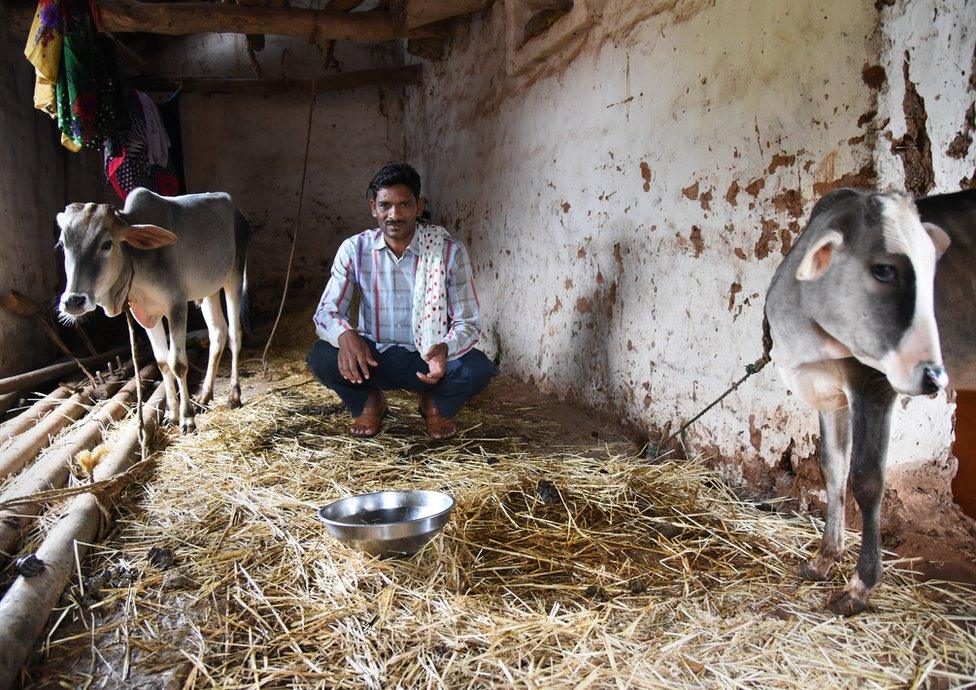
Prem, 35, is the headman of Padhariya Village. He says that a few houses now have television sets which has led to changing aspirations, especially related to fashion. "Also, people are forgetting folk songs, and most remember film songs that they see on TV," he adds.
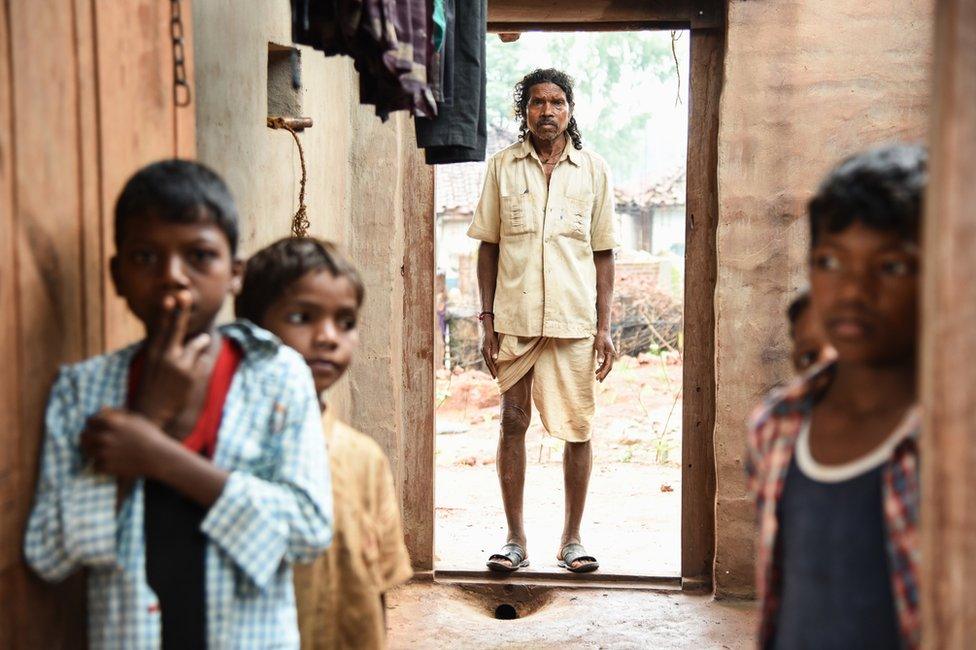
Baisukha, 70, (centre) at home with some of his grandchildren. He says that people in the village used to wear dhoti (a cloth tied around the waist and covering most of the legs) with a bandi (vest-like jacket) but now they wear "full trousers and shirts". "I like what they wear," he says.
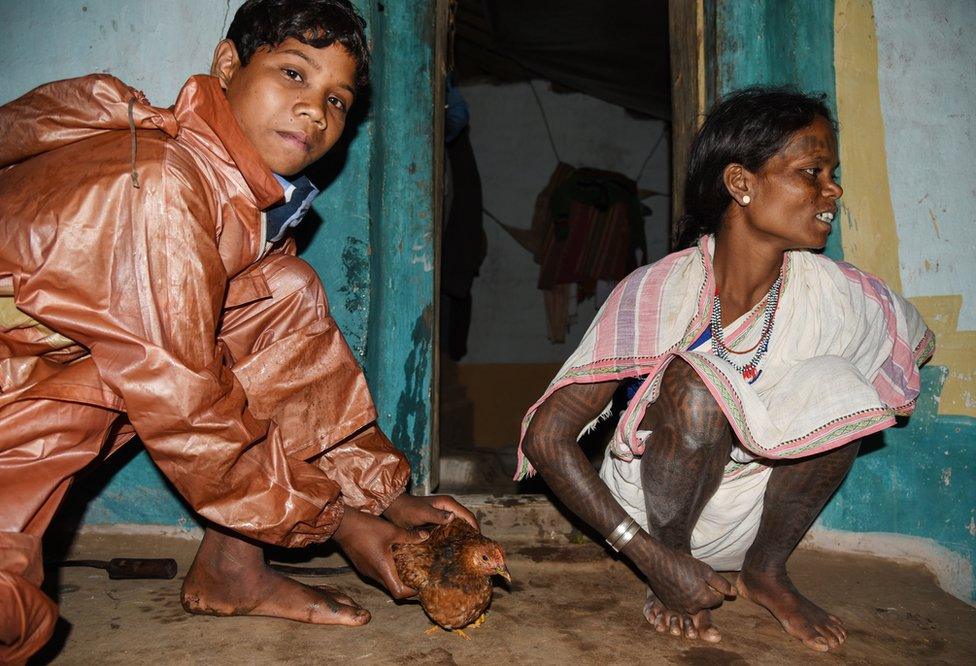
The heavily tattooed Ujiyaro Bai, 36, says tattoos are intrinsic to the identity of the Baiga tribe, but things are changing. "Girls these days go to school and don’t want to get themselves tattooed as it is very painful and it bleeds. They find it embarrassing," she says.
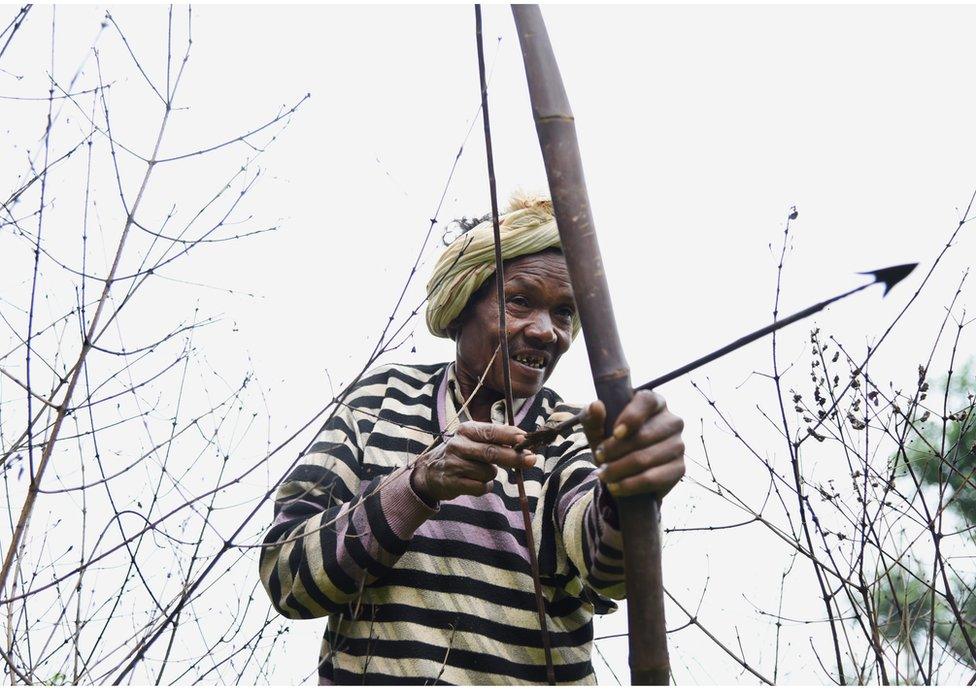
Itwari Singh, 70, demonstrates how to use a bow and arrow to hunt wild animals. Once prevalent within these areas, hunting is now almost extinct among the Baiga community in the district. "There are hardly any animals left and we keep chicken and goats as pets," says his son, Ram Nath.
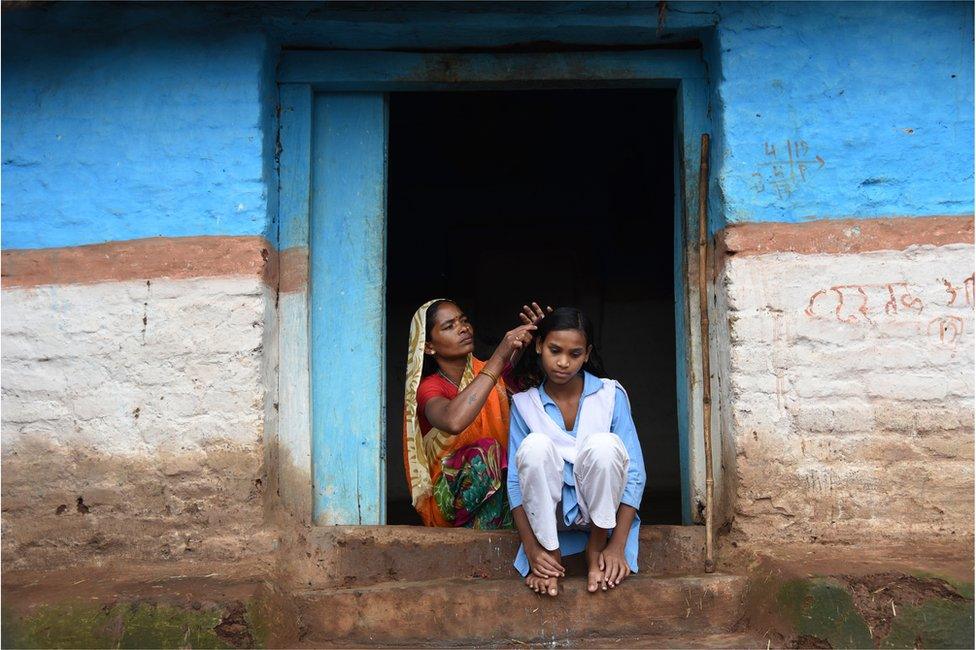
Saraswati, 13, (right) with her aunt Samli Bai, 35, gets ready for school. As a result of increased awareness in the village, Saraswati' family - like several others - got a toilet in their house last year. "Earlier, I used to go out, but in the monsoon it was all dirty," she says. "I am also scared of ghosts after dark so my mother had to come with me."
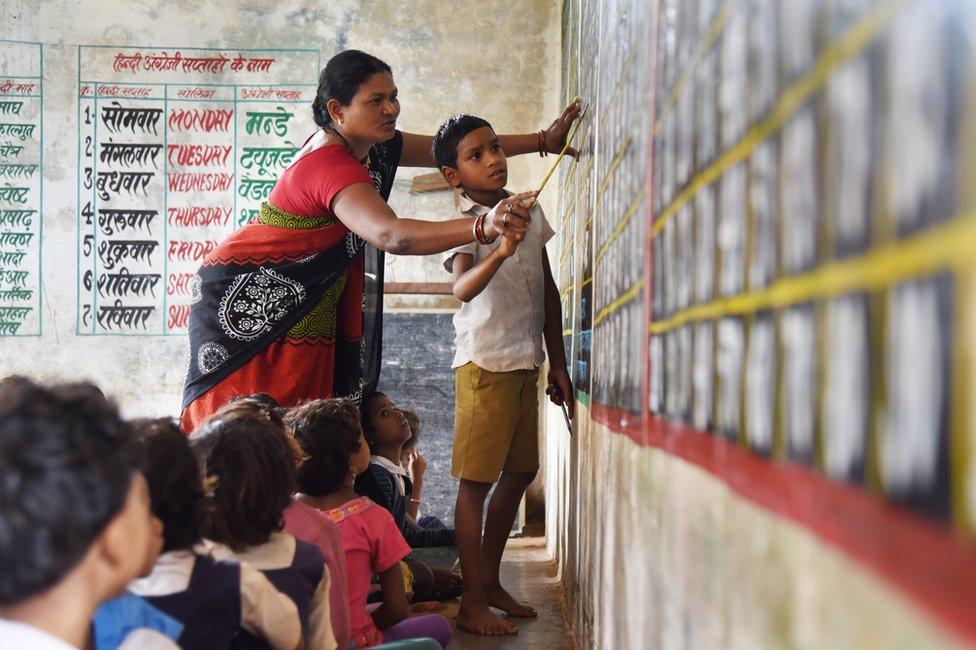
Santoshi, 43, teaching pupils at a school where around 90 children are enrolled. She says many children miss school during the monsoon season in particular, largely due to illnesses such as diarrhoea and vomiting.
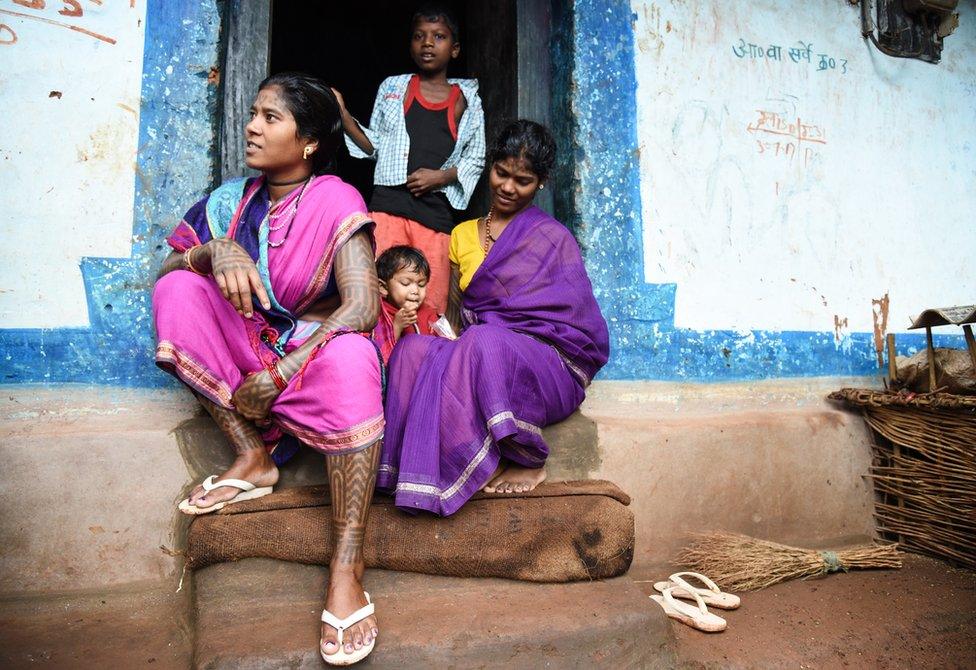
Sumintra, 25, says children in the village usually fail at school because there is too much household work to do like fetching water and cleaning the house. But she dreams of a different future. "When I have children, I will send them to school because education is important to grow in life."
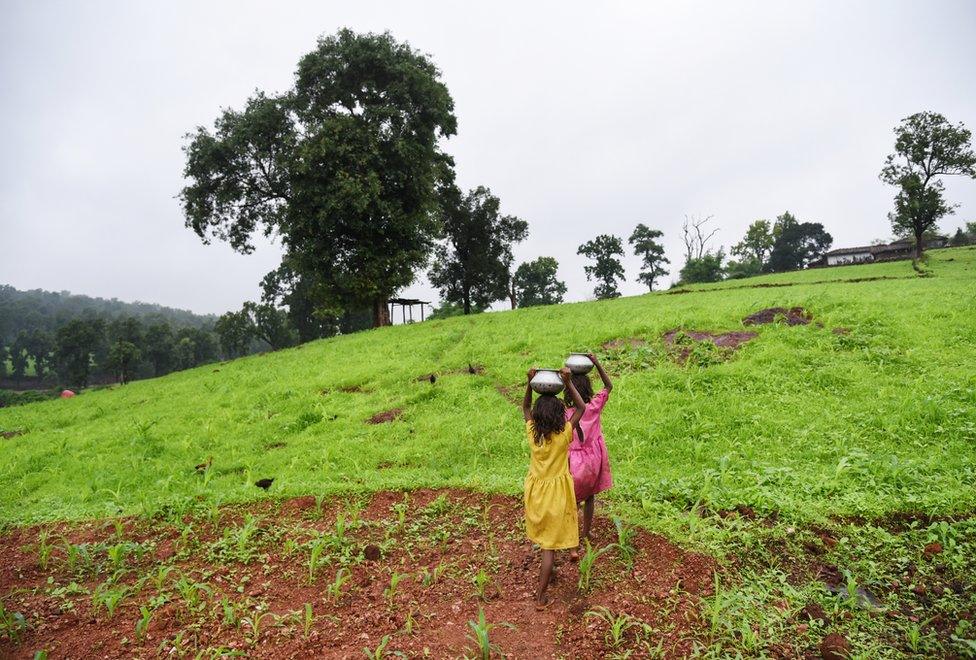
Eight-year-old twins Sita and Kota have to fetch water for cooking, drinking and laundry everyday. "We can make around two to three trips a day," says Sita. "It takes around an hour of our time."
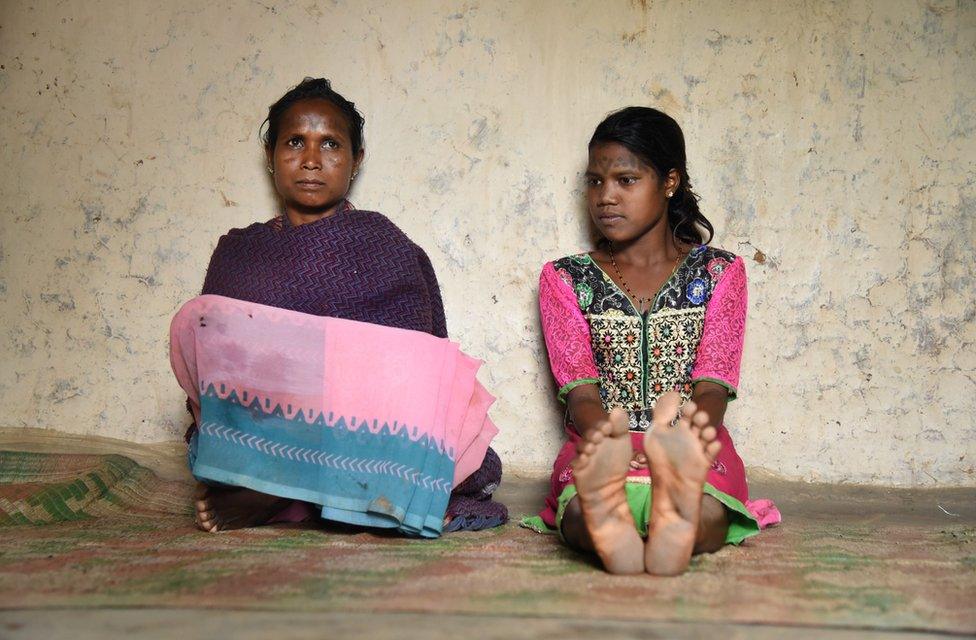
Badri Bai, 40, lives with her husband and three children, including her 15-year-old daughter Anita. "There is a lot of work. Although I want Anita to get a job one day there is almost no time for her to study," she says. "If she does, who will take care of the younger siblings and feed them?"
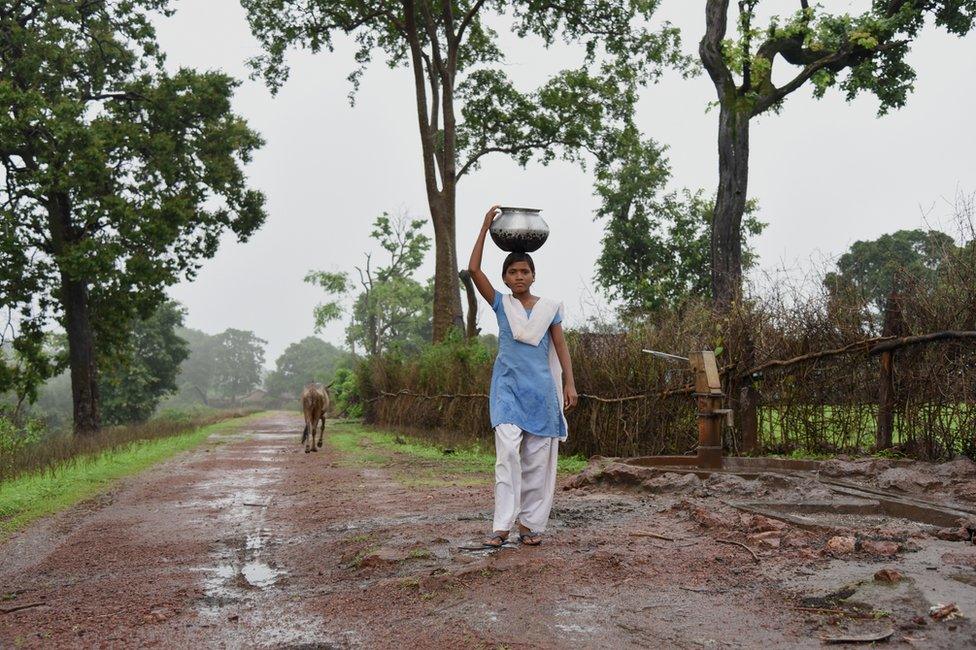
Prabha, 14, wakes up at dawn break and spends a couple of hours collecting water before going to school. In the summers she has to travel to the well or the spring as the village hand pump dries up. "Because of this there is hardly any time to study," she says. When she grows up, Prabha hopes to be a teacher.
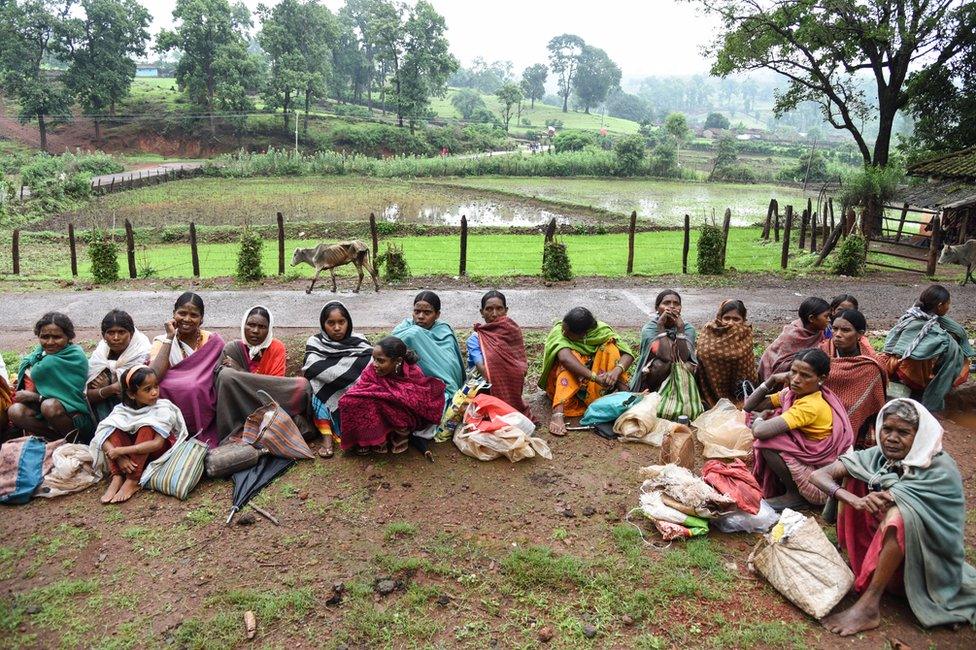
Baiga women queue outside the ration shop, where the Indian government distributes subsidised rice, sugar, salt and kerosene to poor families. Sometimes, they must wait up to two days to collect supplies.